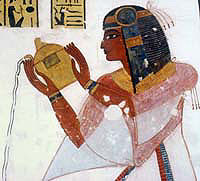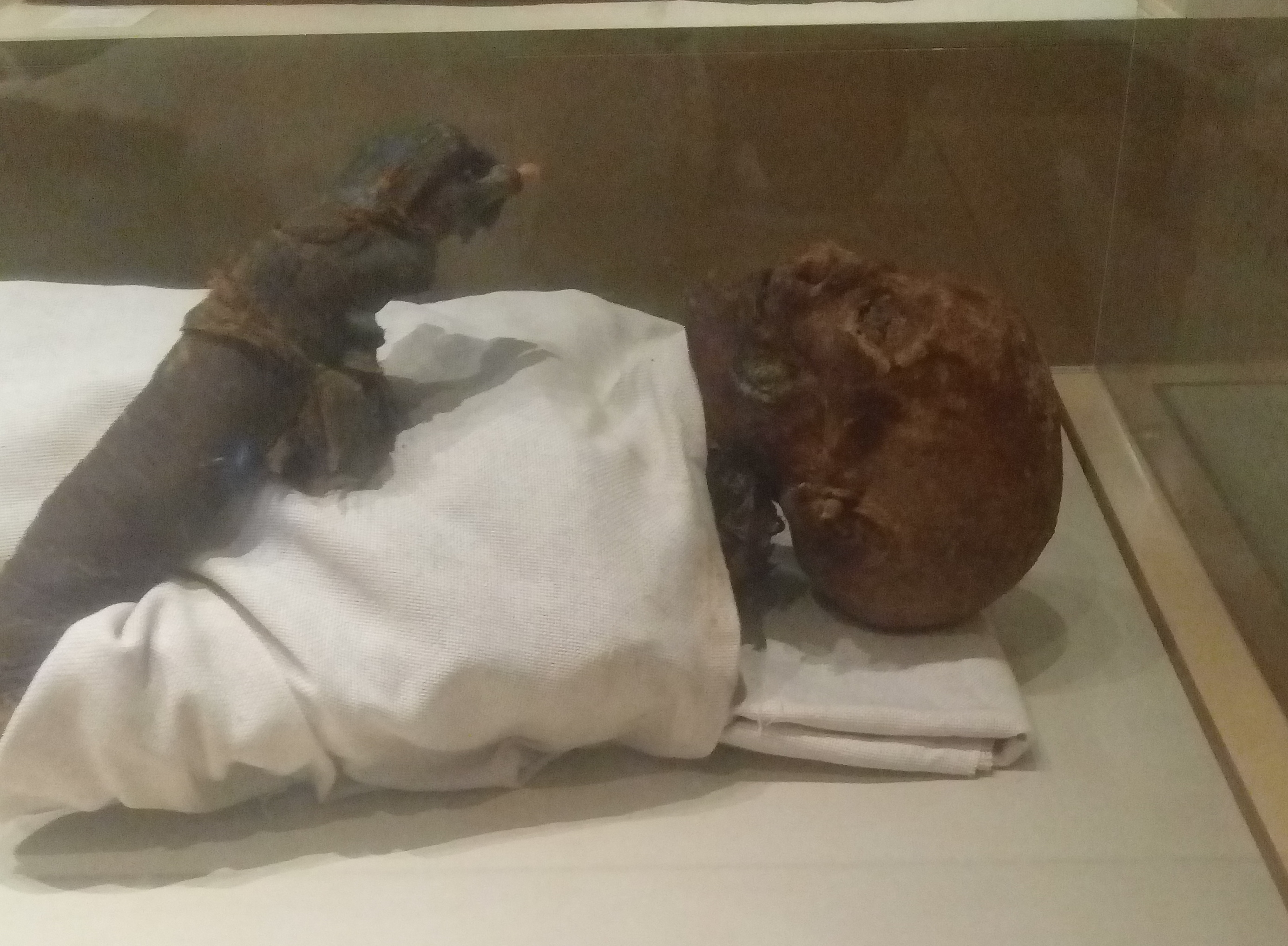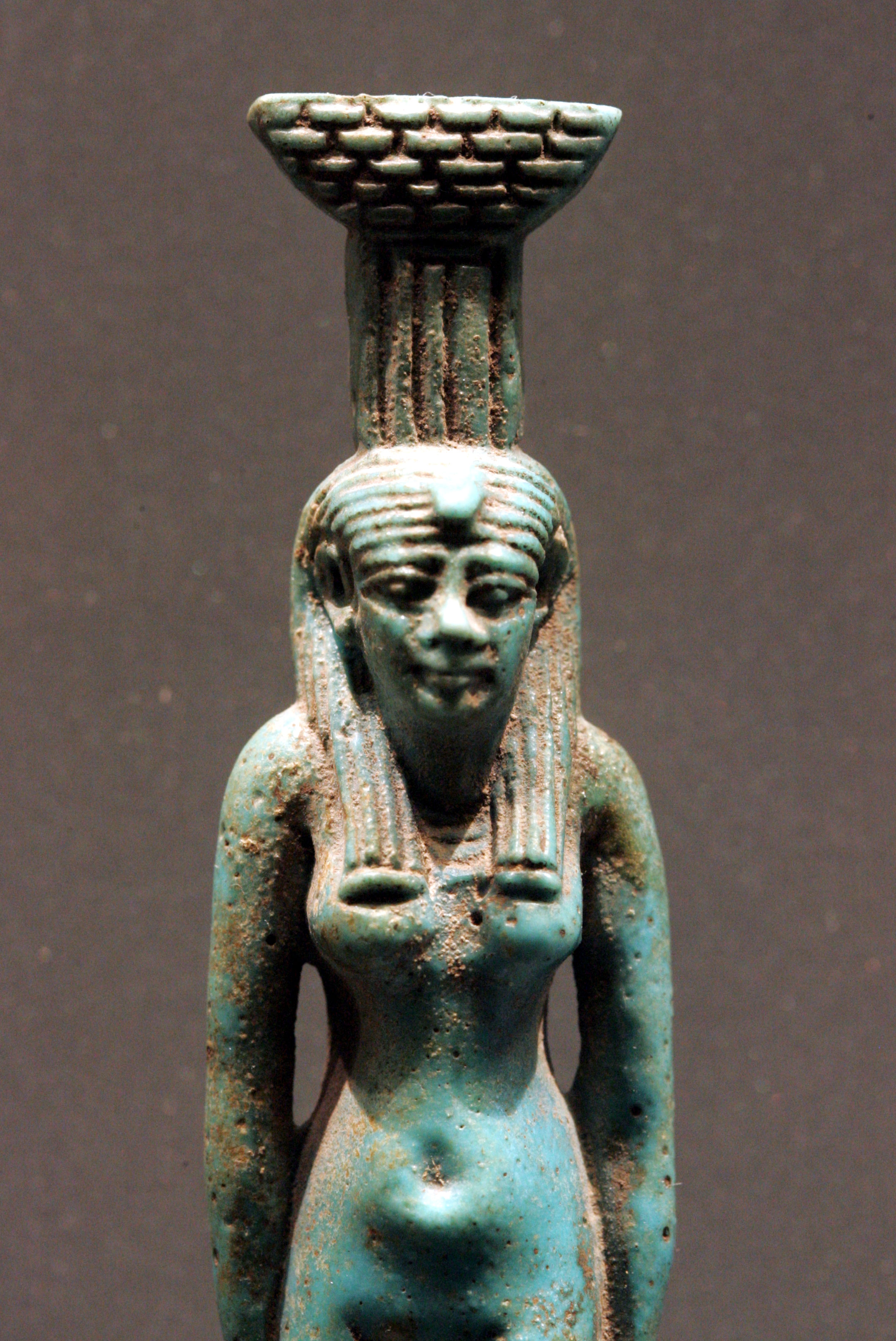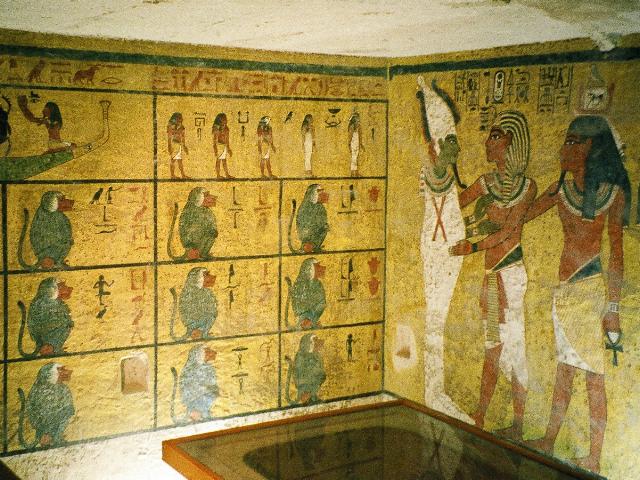|
KV19
Tomb KV19, located in a side branch of Egypt's Valley of the Kings, was intended as the burial place of Prince Ramesses Sethherkhepshef, better known as Pharaoh Ramesses VIII, but was later used for the burial of Prince Mentuherkhepshef instead, the son of Ramesses IX, who predeceased his father. Though incomplete and used "as is," the decoration is considered to be of the highest quality. Location and layout The tomb is located under the cliffs on the eastern side of the Valley of the Kings, between the tombs of Thutmose IV (KV43) and Hatshepsut ( KV20). The layout is simple and consists of a single corridor; quarrying had barely progressed into the second corridor when work stopped. At the end of the corridor, an oblong pit was sunk into the floor to receive the burial, which was covered with limestone slabs. The quarrying style and projected layout date it to the Twentieth Dynasty. The location of the tomb and size of the corridor suggest it was initiated for a king. Howeve ... [...More Info...] [...Related Items...] OR: [Wikipedia] [Google] [Baidu] |
Mentuherkhepshef
Mentuherkhepeshef was an ancient Egyptian prince of the 20th Dynasty, a son of pharaoh Ramesses IX., p.193 His name also occurs as ''Ramesses-Montuherkhepeshef.'' He is likely to have been the brother of pharaoh Ramesses X and prince Nebmaatre. He was buried in his tomb KV19 in the Valley of the Kings, which was probably originally made for Ramesses VIII Usermaatre Akhenamun Ramesses VIII (also written Ramses and Rameses) or Ramesses Sethherkhepshef Meryamun ('Set is his Strength, beloved of Amun') (reigned 1130–1129 BC, or 1130 BC), was the seventh Pharaoh of the Twentieth Dynasty of the New ....Dodson & Hilton, p.194 His titles were: ''First King's Son of his Body; Eldest King's Son of his Body; Generalissimo''; and ''Executive at the Head of the Two Lands.'' Sources Ancient Egyptian princes People of the Twentieth Dynasty of Egypt Ramesses IX {{AncientEgypt-bio-stub ... [...More Info...] [...Related Items...] OR: [Wikipedia] [Google] [Baidu] |
Ramesses IX
Neferkare Setepenre Ramesses IX (also written Ramses) (originally named Amon-her-khepshef Khaemwaset) (ruled 1129–1111 BC) was the eighth pharaoh of the Twentieth Dynasty of Egypt. He was the third longest serving king of this Dynasty after Ramesses III and Ramesses XI. He is now believed to have assumed the throne on I Akhet day 21 based on evidence presented by Jürgen von Beckerath in a 1984 GM article. According to Papyrus Turin 1932+1939, Ramesses IX enjoyed a reign of 18 years and 4 months and died in his 19th Year in the first month of Peret between day 17 and 27. His throne name, Neferkare Setepenre, means "Beautiful Is The Soul of Re, Chosen of Re." Ramesses IX is believed to be the son of Mentuherkhepeshef, a son of Ramesses III, since Mentuherkhopshef's wife, the lady Takhat bears the prominent title of King's Mother on the walls of tomb KV10, which she usurped and reused in the late 20th Dynasty; no other 20th Dynasty king is known to have had a mother with this na ... [...More Info...] [...Related Items...] OR: [Wikipedia] [Google] [Baidu] |
KV20
KV20 is a tomb in the Valley of the Kings (Egypt). It was probably the first royal tomb to be constructed in the valley. KV20 was the original burial place of Thutmose I (who was later re-interred in KV38) and later was adapted by his daughter Hatshepsut to accommodate both her and her father. The tomb was known to the Napoleonic expedition in 1799 and had been visited by several explorers between 1799 and 1903, but a full clearance of the tomb only was undertaken by Howard Carter in 1903–1904. KV20 is distinguishable from other tombs in the valley, both in its general layout and because of the atypical clockwise curvature of its corridors. Location and exploration KV20 is located in the easternmost branch of the valley near the later tombs KV19, KV43, and KV60. It was known to the French expedition of 1799 and to Belzoni, who worked in the area in 1817. A first attempt to excavate the tomb was undertaken by James Burton in 1824, who cleared it as far as the tomb's first cha ... [...More Info...] [...Related Items...] OR: [Wikipedia] [Google] [Baidu] |
KV60
Tomb KV60 is an ancient Egyptian tomb in the Valley of the Kings, Egypt. It was discovered by Howard Carter in 1903, and re-excavated by Donald P. Ryan in 1989. It is one of the more perplexing tombs of the Theban Necropolis, due to the uncertainty over the identity of one female mummy found there (KV60A). She is identified by some, such as Egyptologist Elizabeth Thomas, to be that of the Eighteenth Dynasty pharaoh Hatshepsut; this identification is advocated for by Zahi Hawass. Layout This small, uninscribed tomb is located approximately front of the entrance of the tomb of Mentuherkhepshef (KV19). It consists of a rough, steep, flight of stairs leading to a doorway blocked with large stones. A pair of niches are cut into the wall just inside the entrance. A straight passage that is about long descends to a low, roughly cut chamber which measures about high. A small side chamber branches off about halfway down the descending corridor. Discovery and investigations This tomb ... [...More Info...] [...Related Items...] OR: [Wikipedia] [Google] [Baidu] |
Valley Of The Kings
The Valley of the Kings ( ar, وادي الملوك ; Late Coptic: ), also known as the Valley of the Gates of the Kings ( ar, وادي أبوا الملوك ), is a valley in Egypt where, for a period of nearly 500 years from the 16th to 11th century BC, rock-cut tombs were excavated for the pharaohs and powerful nobles of the New Kingdom (the Eighteenth to the Twentieth Dynasties of Ancient Egypt). The valley stands on the west bank of the Nile opposite Thebes (modern Luxor), within the heart of the Theban Necropolis.Siliotti (1997), p.13 The wadi consists of two valleys: the East Valley (where the majority of the royal tombs are situated) and the West Valley (Valley of the Monkeys). With the 2005 discovery of a new chamber and the 2008 discovery of two further tomb entrances, the valley is known to contain 63 tombs and chambers (ranging in size from KV54, a simple pit, to KV5, a complex tomb with over 120 chambers). It was the principal burial place of the major royal ... [...More Info...] [...Related Items...] OR: [Wikipedia] [Google] [Baidu] |
Ramesses VIII
Usermaatre Akhenamun Ramesses VIII (also written Ramses and Rameses) or Ramesses Sethherkhepshef Meryamun ('Set is his Strength, beloved of Amun') (reigned 1130–1129 BC, or 1130 BC), was the seventh Pharaoh of the Twentieth Dynasty of the New Kingdom of Egypt, and was the 9th of the 10 sons of Ramesses III. Reign Ramesses VIII is the most obscure ruler of this Dynasty, and the current information from his brief kingship suggests that he lasted on the throne for one year at the most. The fact that he succeeded to power after the death of Ramesses VII —his half-nephew and a son of Ramesses VI—may indicate a continuing problem in the royal succession.Clayton, p.169 Ramesses VIII was a son of Ramesses III. Ramesses VIII's Prenomen, Usermaatre Akhenamun, means "Powerful is the maat of Ra, Effective for Amun." Monuments from his reign are scarce, and consist primarily of an inscription at Medinet Habu, a mention of this ruler in one document — Berlin stele 2081 of Hori a ... [...More Info...] [...Related Items...] OR: [Wikipedia] [Google] [Baidu] |
List Of Burials In The Valley Of The Kings
The following is a list of burials in the Valley of the Kings, in Thebes (modern Luxor, Egypt) and nearby areas. The numbering system was established by John Gardner Wilkinson in 1821. Wilkinson numbered the 21 tombs known to him (some of which had been open since antiquity) according to their location, starting at the entrance to the valley and then moving south and east. Tombs that have been discovered since then have been allocated a sequential KV number (those in the Western Valley are known by the WV equivalent) in the order of their discovery. Since the mid 20th century, Egyptologists have used the acronym "KV" (standing for Kings' Valley) to designate tombs located in the Valley of the Kings. East Valley Most of the open tombs in the Valley of the Kings are located in the East Valley, and this is where most tourists can be found. West Valley The numbering the West Valley follows in sequence to that of the East Valley, and there are only four known burials/pits in ... [...More Info...] [...Related Items...] OR: [Wikipedia] [Google] [Baidu] |
Nephthys
Nephthys or Nebet-Het in ancient Egyptian ( grc-gre, Νέφθυς) was a goddess in ancient Egyptian religion. A member of the Great Ennead of Heliopolis in Egyptian mythology, she was a daughter of Nut and Geb. Nephthys was typically paired with her sister Isis in funerary ritesAbeer El-Shahawbooks.google.co.uk''The funerary art of Ancient Egypt: a bridge to the realm of the hereafter'' (106 pages) American University in Cairo Press, 2005 etrieved 2011-12-12/ref> because of their role as protectors of the mummy and the god Osiris and as the sister-wife of Set. She was associated with mourning, the night/darkness, service (specifically temples), childbirth, the dead, protection, magic, health, embalming, and beer. Etymology Nephthys is the Greek form of an epithet (transliterated as ''Nebet-hut'', ''Nebet-het'', ''Nebt-het'', from Egyptian ''nbt-ḥwt''). The origin of the goddess Nephthys is unclear but the literal translation of her name is usually given as ''Lady o ... [...More Info...] [...Related Items...] OR: [Wikipedia] [Google] [Baidu] |
Isis
Isis (; ''Ēse''; ; Meroitic: ''Wos'' 'a''or ''Wusa''; Phoenician: 𐤀𐤎, romanized: ʾs) was a major goddess in ancient Egyptian religion whose worship spread throughout the Greco-Roman world. Isis was first mentioned in the Old Kingdom () as one of the main characters of the Osiris myth, in which she resurrects her slain brother and husband, the divine king Osiris, and produces and protects his heir, Horus. She was believed to help the dead enter the afterlife as she had helped Osiris, and she was considered the divine mother of the pharaoh, who was likened to Horus. Her maternal aid was invoked in healing spells to benefit ordinary people. Originally, she played a limited role in royal rituals and temple rites, although she was more prominent in funerary practices and magical texts. She was usually portrayed in art as a human woman wearing a throne-like hieroglyph on her head. During the New Kingdom (), as she took on traits that originally belonged to Ha ... [...More Info...] [...Related Items...] OR: [Wikipedia] [Google] [Baidu] |
Serket
Serket ( egy, , italics=no, translit=srqt) is the goddess of healing venomous stings and bites in Egyptian mythology, originally the deification of the scorpion. Her family life is unknown, but she is sometimes credited as the daughter of Neith and Khnum, making her a sister to Sobek and Apep. Scorpion stings lead to paralysis and Serket's name describes this, as it means "(she who) tightens the throat"; however, Serket's name also can be read as meaning "(she who) causes the throat to breathe" and so, as well as being seen as stinging the unrighteous, Serket was seen as one who could cure scorpion stings and the effects of other venoms such as snakebites. In the art of ancient Egypt, Serket was depicted as a scorpion (a symbol found on the earliest artifacts of the culture, such as from Naqada III) or to have the body of a scorpion but the head of a woman or as a woman with a scorpion on her head. Although Serket does not appear to have had any temples, she had a sizable ... [...More Info...] [...Related Items...] OR: [Wikipedia] [Google] [Baidu] |
Howard Carter
Howard Carter (9 May 18742 March 1939) was a British archaeologist and Egyptologist who discovered the intact tomb of the 18th Dynasty Pharaoh Tutankhamun in November 1922, the best-preserved pharaonic tomb ever found in the Valley of the Kings. Early life Howard Carter was born in Kensington on 9 May 1874, the youngest child (of eleven) of artist and illustrator Samuel John Carter and Martha Joyce Carter (). His father helped train and develop his artistic talents. Carter spent much of his childhood with relatives in the Norfolk market town of Swaffham, the birthplace of both his parents. Receiving only limited formal education at Swaffham, he showed talent as an artist. The nearby mansion of the Amherst family, Didlington Hall, contained a sizable collection of Egyptian antiques, which sparked Carter's interest in that subject. Lady Amherst was impressed by his artistic skills, and in 1891 she prompted the Egypt Exploration Fund (EEF) to send Carter to assist an Amhe ... [...More Info...] [...Related Items...] OR: [Wikipedia] [Google] [Baidu] |
Midden
A midden (also kitchen midden or shell heap) is an old dump for domestic waste which may consist of animal bone, human excrement, botanical material, mollusc shells, potsherds, lithics (especially debitage), and other artifacts and ecofacts associated with past human occupation. These features provide a useful resource for archaeologists who wish to study the diets and habits of past societies. Middens with damp, anaerobic conditions can even preserve organic remains in deposits as the debris of daily life are tossed on the pile. Each individual toss will contribute a different mix of materials depending upon the activity associated with that particular toss. During the course of deposition sedimentary material is deposited as well. Different mechanisms, from wind and water to animal digs, create a matrix which can also be analysed to provide seasonal and climatic information. In some middens individual dumps of material can be discerned and analysed. Shells A shel ... [...More Info...] [...Related Items...] OR: [Wikipedia] [Google] [Baidu] |







